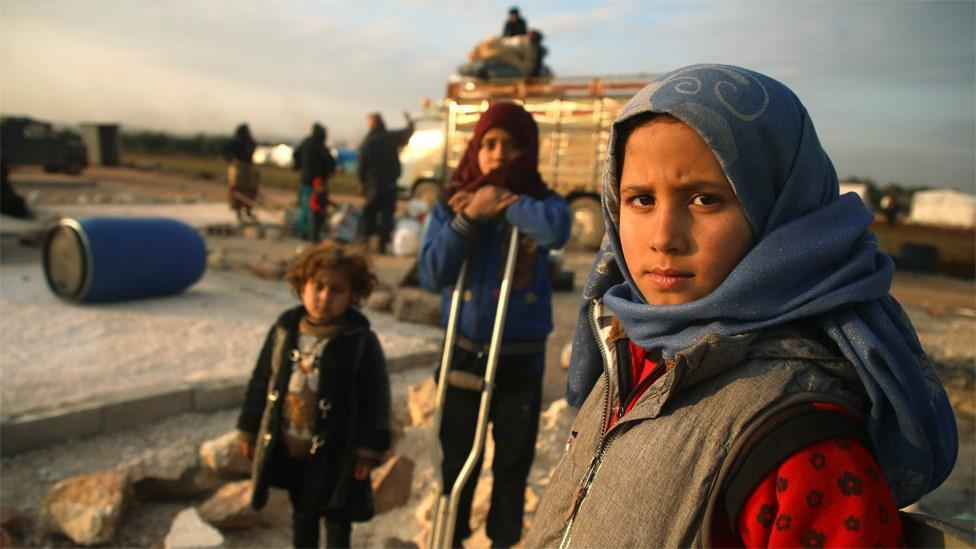Syria war: Forgotten amid the bombs: Idlib's ancient, ruined riches
- Published
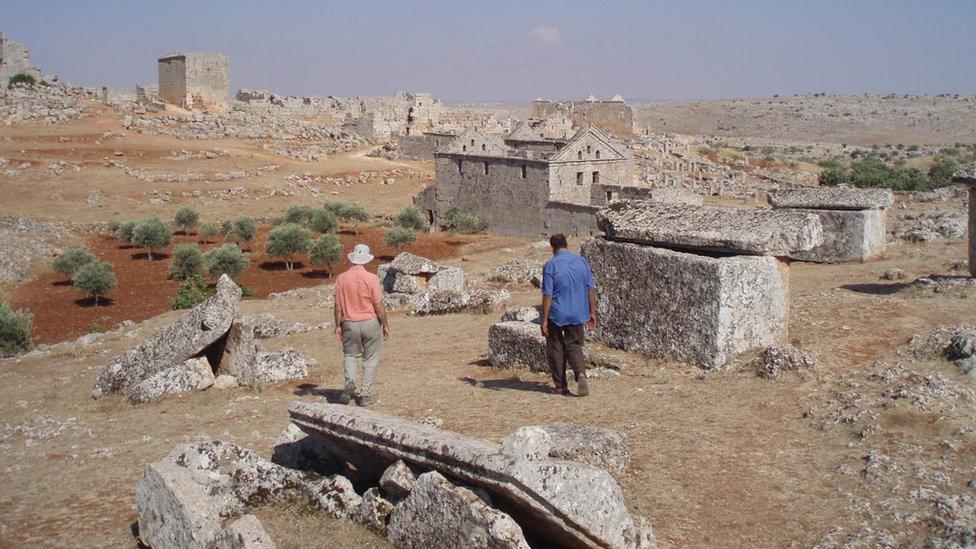
The haunting beauty of Syria's so-called Dead Cities, once seen, is never forgotten. Here on the wild and magical hills of the north-west nestles the world's richest repository of 4th, 5th and 6th Century churches - over 2,000, spread among hundreds of early Byzantine settlements.
Together, they represent the transition from Roman paganism to the zeal of early Christianity, providing unique evidence in stone of the influence of Syrian styles on the subsequent evolution of European Romanesque and Gothic religious architecture.
But today, like the three million souls currently kettled in Idlib province, they are endangered and largely forgotten. Bygone inhabitants grew prosperous from production of olive oil and wine, as their stone presses testify. Today's cash crop is cigarette tobacco - lifeblood of the war which has been raging since 2011.
Ironically, Syria's tourism ministry rebranded the ruins The Forgotten Cities before the war, imagining high-end walking tours for romantically-minded visitors.


So forgotten were they, that the UN's cultural agency Unesco only recognised as them as a World Heritage Site in June 2011, calling them Ancient Villages of Northern Syria.
'Heart of the Almond'
Confusion over what to call them remains, but beyond doubt is their astonishing state of preservation.
The ancestor of France's beloved Notre-Dame Cathedral still stands on a remote hilltop in rebel-held Idlib, its familiar twin-towered facade flanking a monumental entrance.
Crafted from local limestone around AD460, it has survived wars, earthquakes and centuries of use as a playground for village children, never requiring buttressing in over 1,500 years.
Known as Qalb Lozeh - literally Heart of the Almond (or, crème de la crème) - its flamboyant doorway was designed to welcome eager pilgrims en route to hear the eccentric St Simeon preach from his pillar, a day's walk north-east.
Families in Syria use any transport they can to flee violence in Idlib
In the valley below, today's Qalb Lozeh villagers would have heard the explosions from Barisha on 27 October 2019, when the head of the Islamic State (IS) group, Abu Bakr al-Baghdadi, died in a raid by US special forces.
Idlib's rugged karst geography makes it natural guerrilla territory, with perfect caves for rebel hideouts.
Hermits too have long sought refuge in these caves. St Simeon Stylites, son a local farmer, was the most celebrated hermit of his day, moving from a cave to a pillar ("stylos" in Greek) to escape the crowds who pursued him.
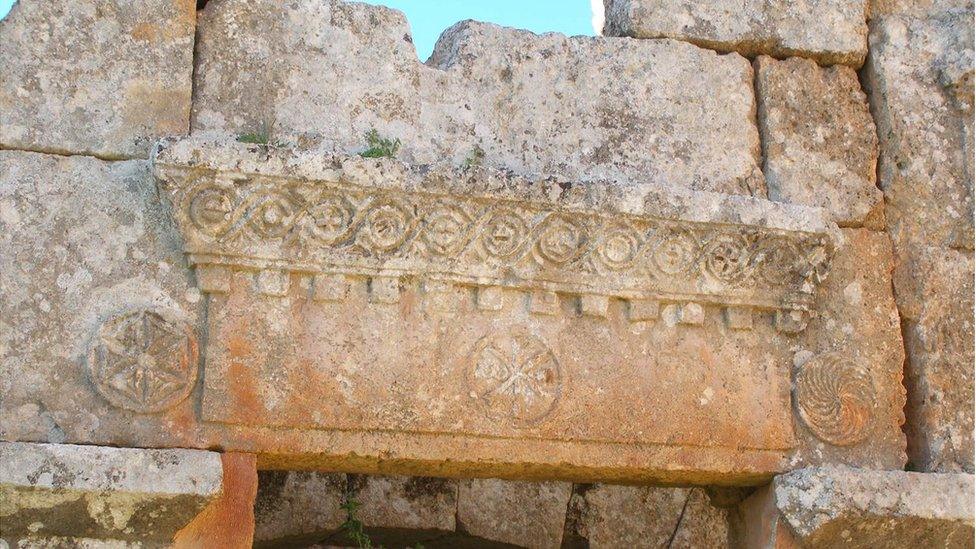
When he died in 459 after living 36 years on top of his pillar, the Byzantine emperor ordered the construction of four basilicas and a walk-in baptistery to mark the spot.
The resulting St Simeon's Basilica complex, completed in 490, was the Santiago de Compostela of its day, the first centred church beneath a dome, not surpassed in all of Christendom till Hagia Sophia in 537. Its curved apse (or chevet) and the finely sculpted ornamentation on its lintels, arches, mouldings and facades herald the many subsequent architectural refinements of Constantinople and Europe.
The magnificent complex was badly damaged in May 2016 by Russian air strikes, carried out in support of the Syrian government against rebels, blowing what remained of St Simeon's pillar to pieces. Today the raised hilltop is the site of a Turkish observation post, set up as part of a deal to "de-escalate" the fighting.
Abandoned to their fate
Alas, one development at least eluded the observers: on 17 December 2019 the disappearance was reported from Ain Dara, an unusual neo-Hittite temple just north of St Simeon's, of a giant basalt lion, guardian of the site for 3,000 years.
Now feared smuggled across the Turkish border, it represented Mesopotamian fertility goddess Ishtar, popularised through Agatha Christie's Curse of Ishtar set in Iraq where Christie, who worked on excavations in northern Syria with her archaeologist husband Max Mallowan, helped save ancient treasures under threat.
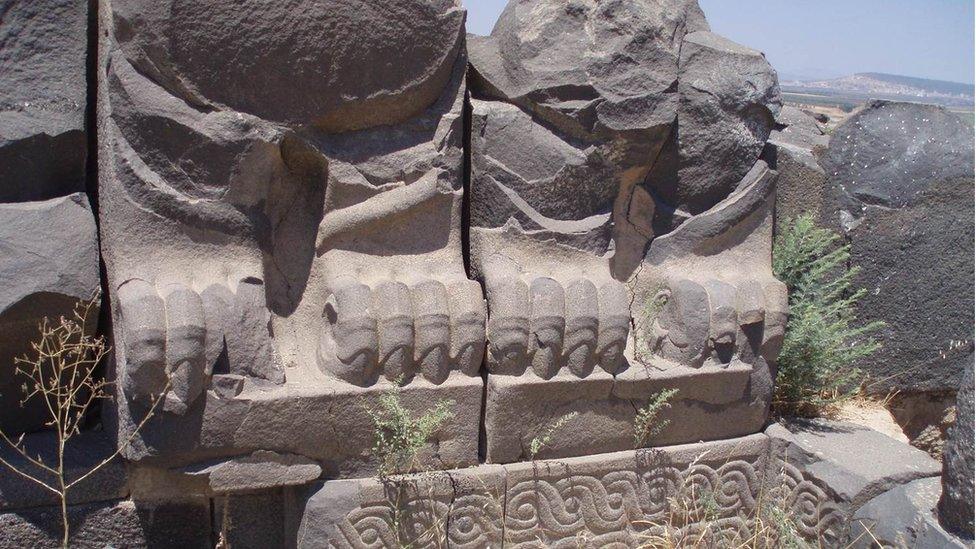
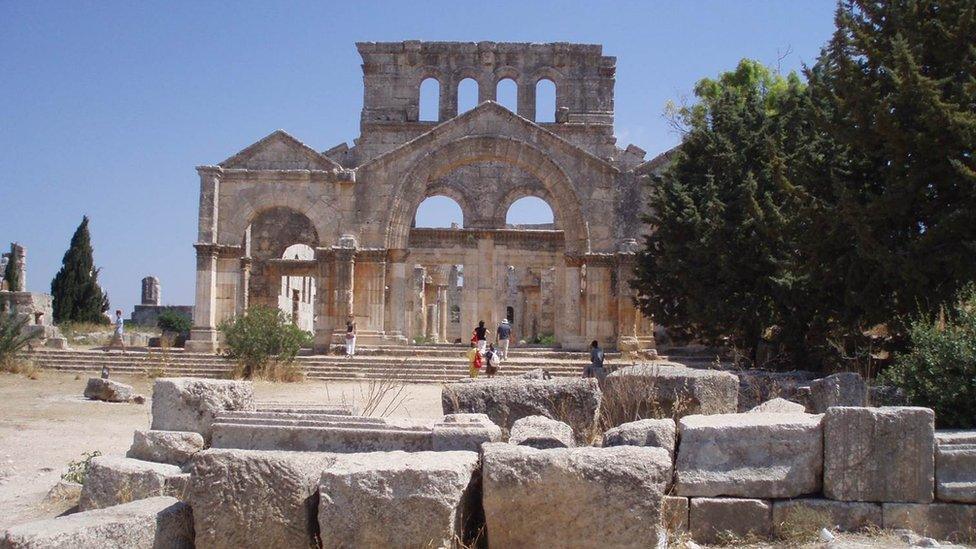
In January 2018 the temple was 60% destroyed by Turkish air force bombing, part of an operation to drive from Afrin Kurdish fighters affiliated with the Kurdistan Workers' Party (PKK) - a rebel group fighting for Kurdish autonomy in Turkey.
The routine Russian/Syrian bombing of Idlib's schools and hospitals barely makes the headlines these days. Neither does the displacement of thousands of its poverty-stricken civilians into cold and muddy olive groves. Idlib's inhabitants and culture are both "Forgotten" and "Dead", abandoned to their fate.
Unmoved by massive loss of life and heritage, hardcore Islamist extremists are digging in for the long haul. Most are not local, but with north-west Syria now home to the world's largest concentration of al-Qaeda-affiliated groups, the next iteration of IS may even now be incubating, soon to emerge from the caves of Idlib, to wreak more damage on Syria's battered people and culture.
Diana Darke is the author of several books on Middle East culture, including My House in Damascus (2016) and Stealing from the Saracens: How Islamic architecture shaped Europe (2020). Follow her on Twitter, external.
- Published19 January 2020
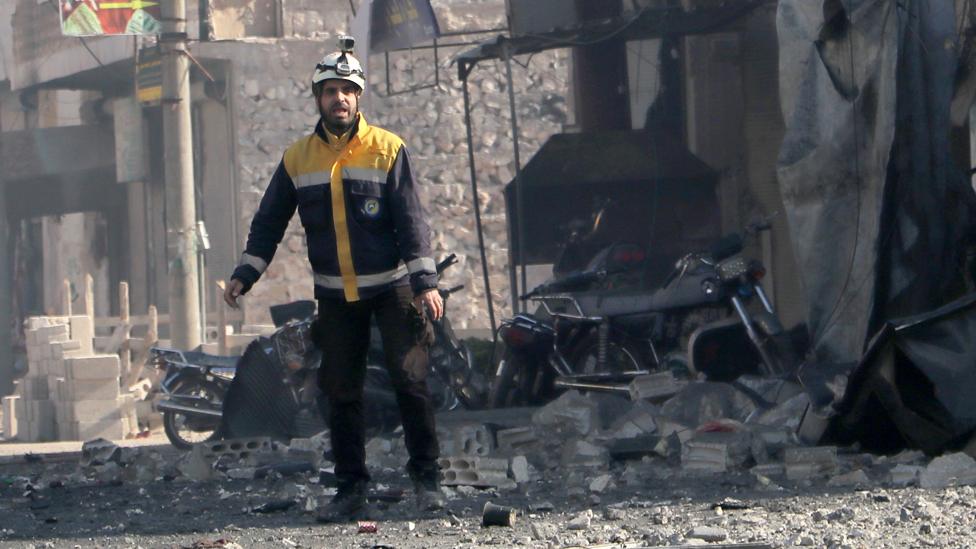
- Published2 May 2023
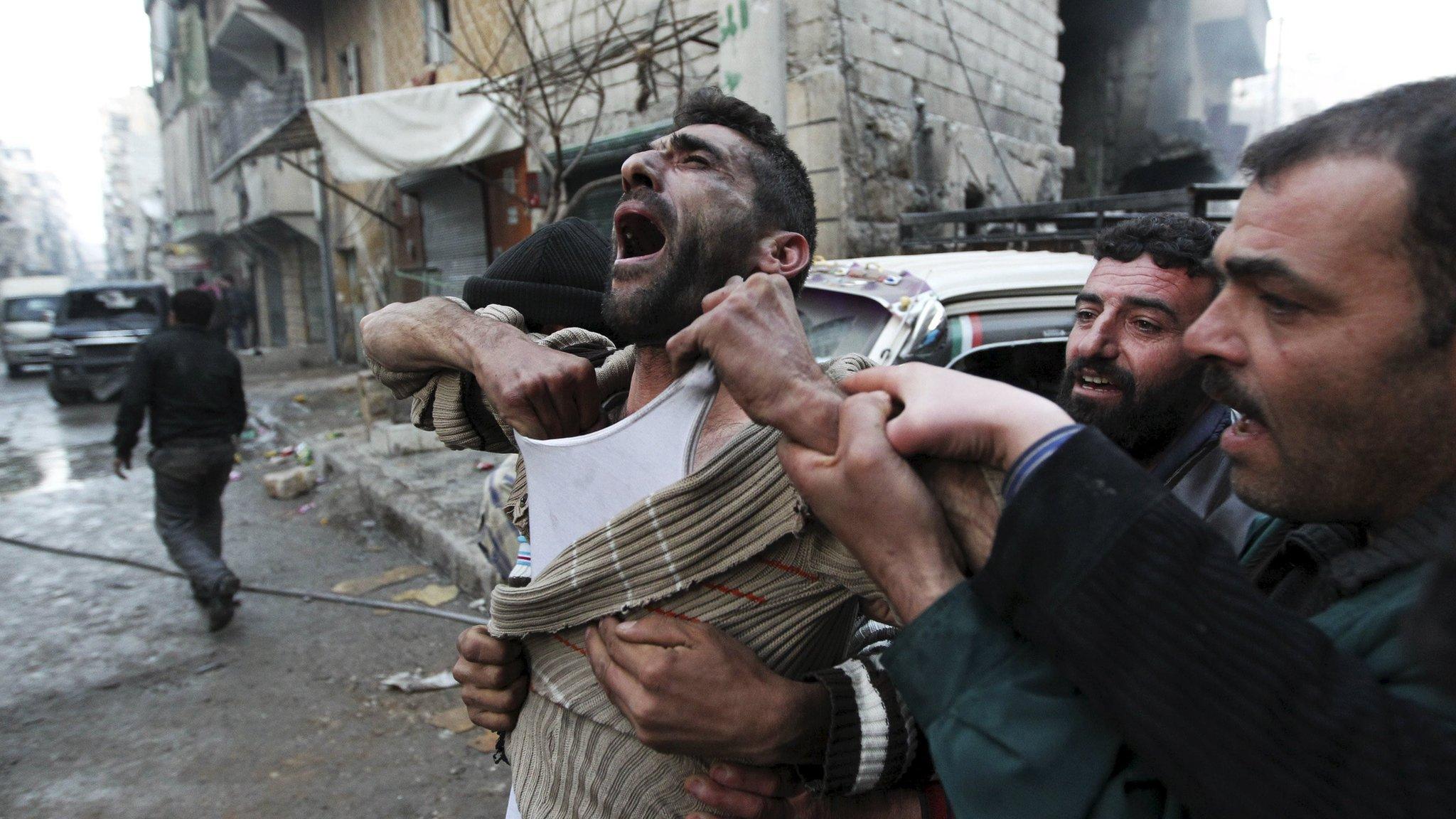
- Published18 February 2020
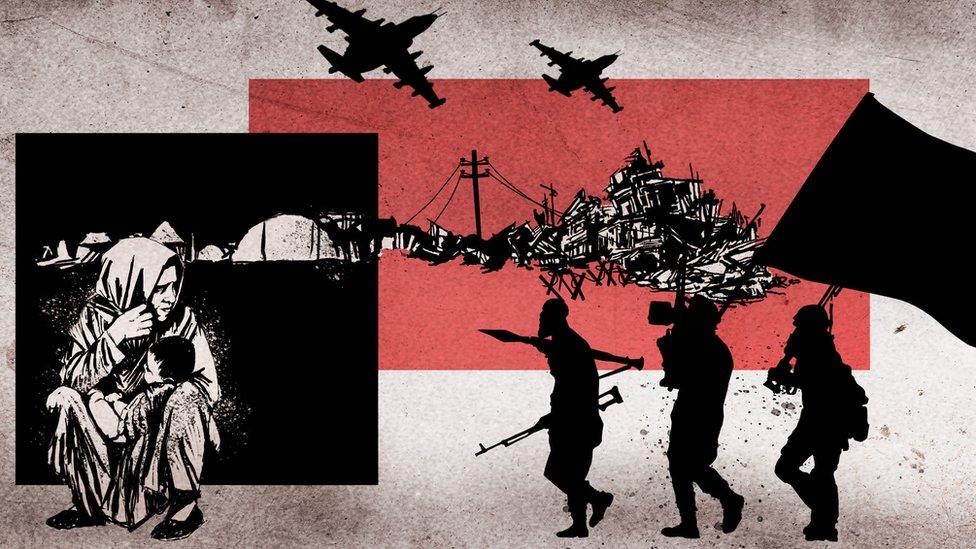
- Published18 February 2020
